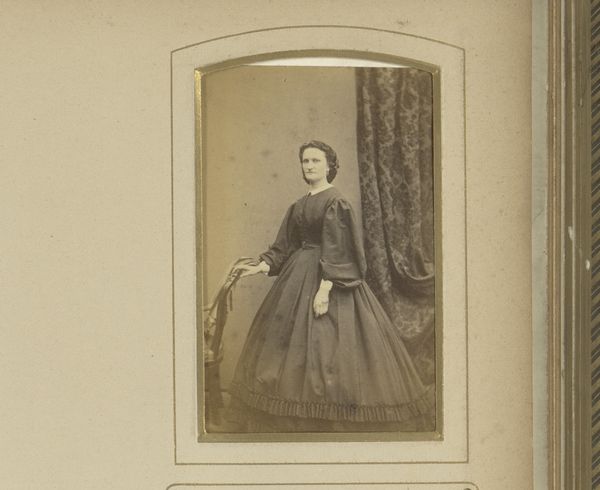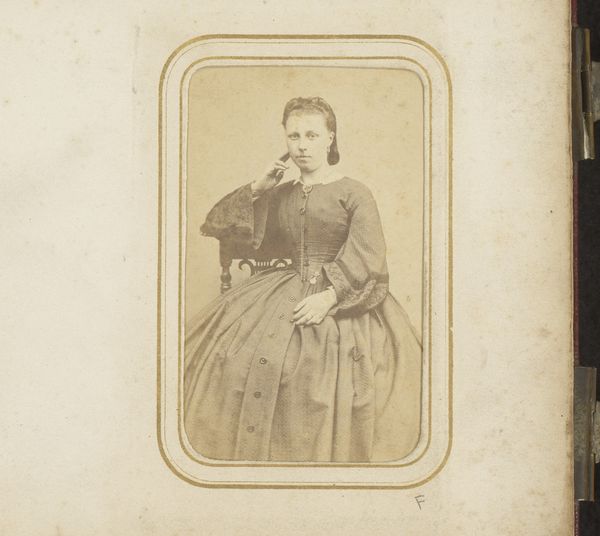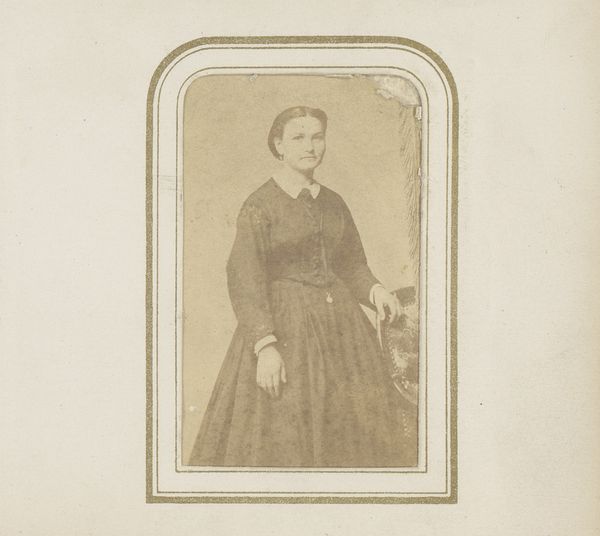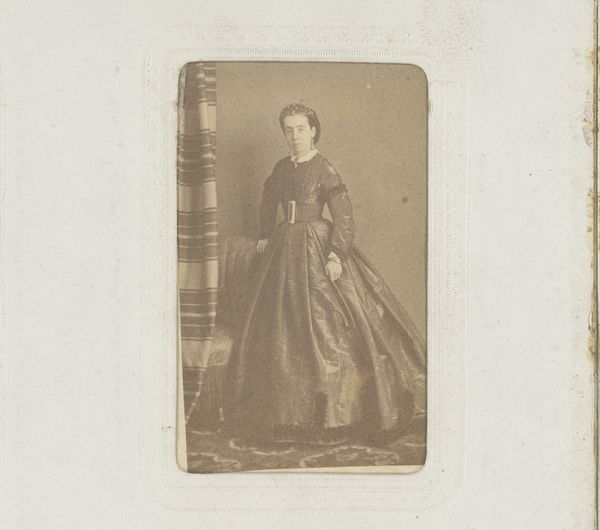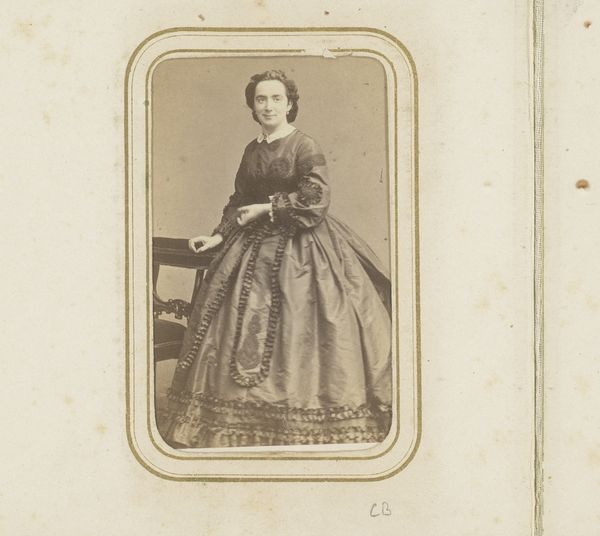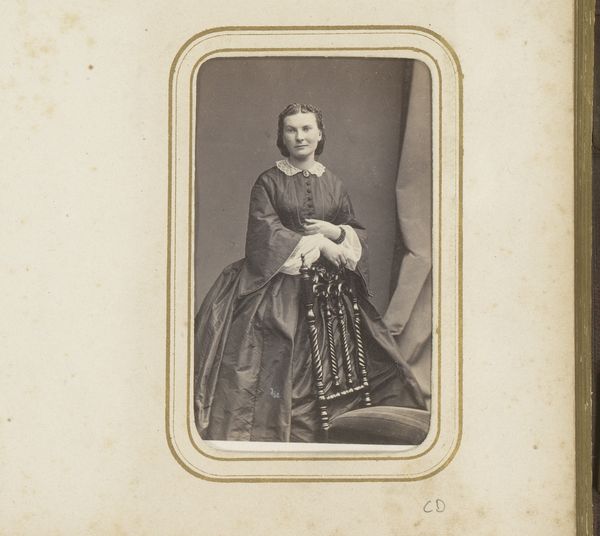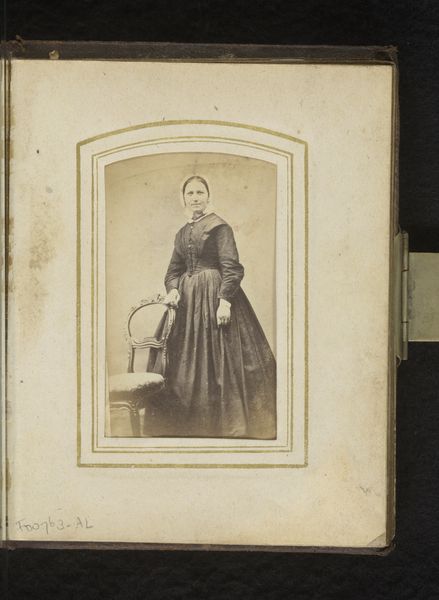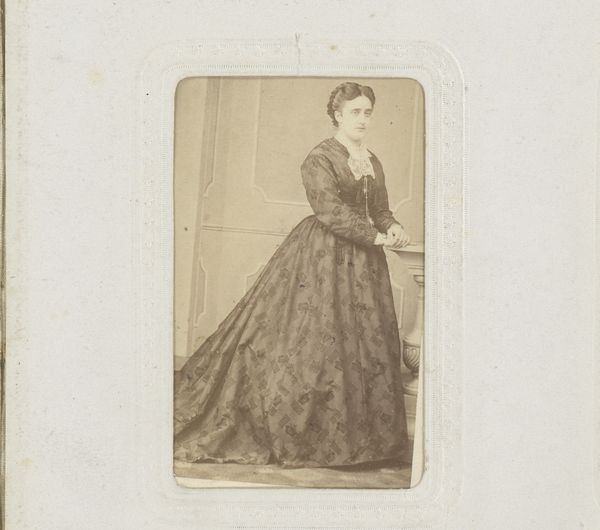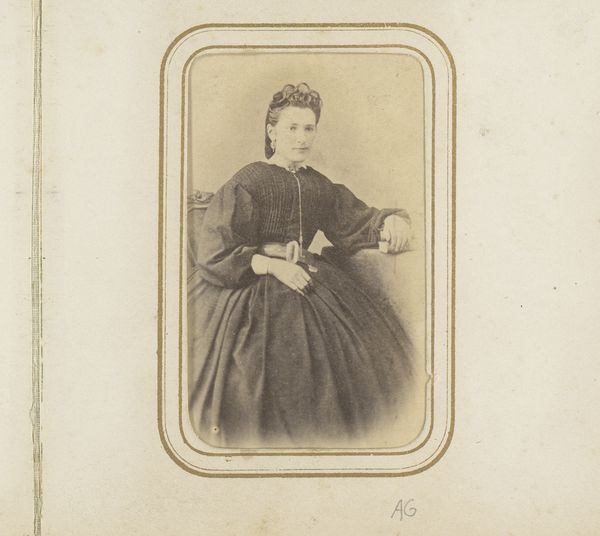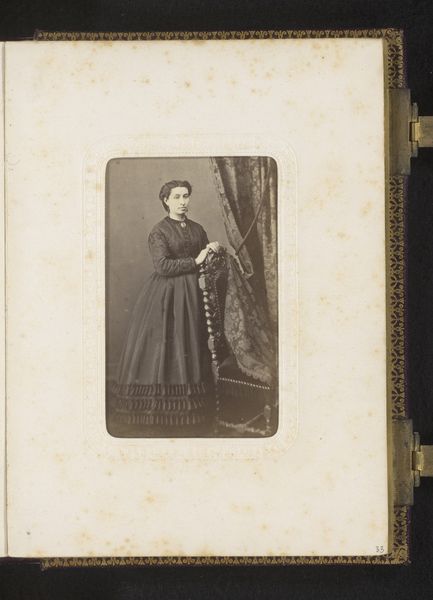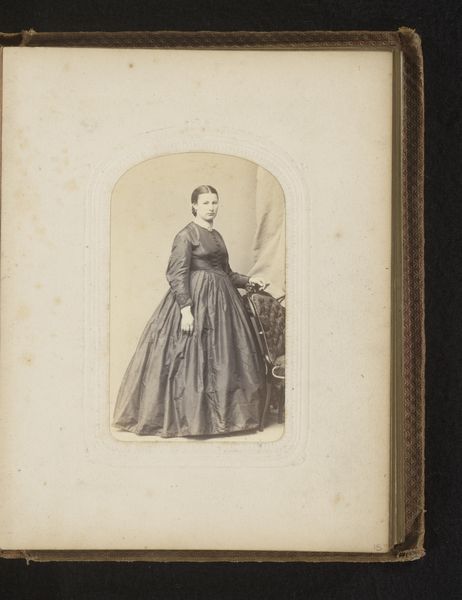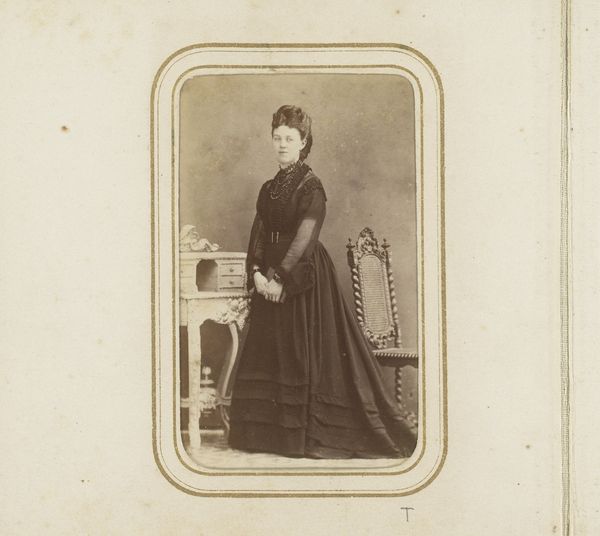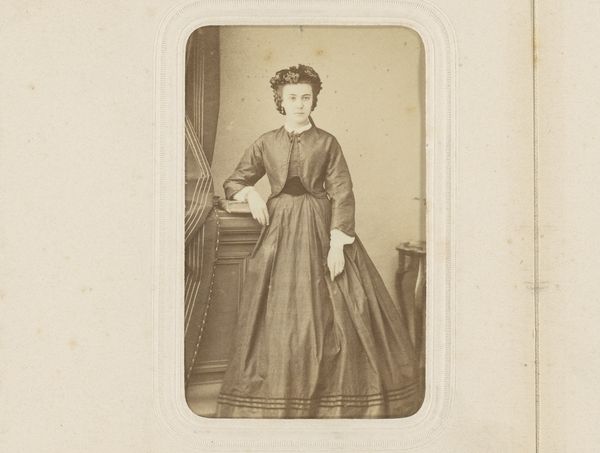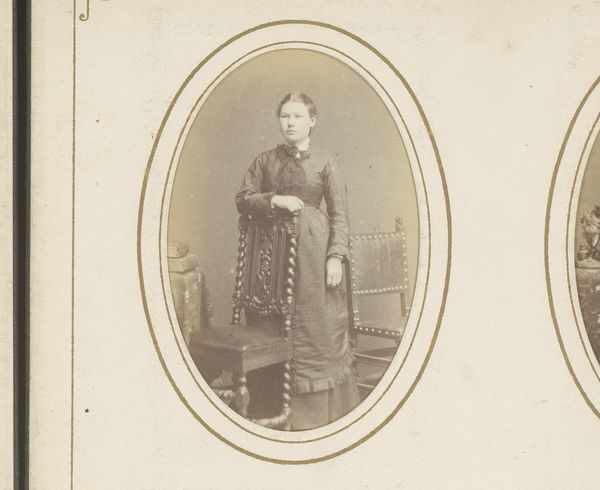
photography, albumen-print
#
portrait
#
photography
#
historical photography
#
19th century
#
albumen-print
Dimensions: height 83 mm, width 51 mm
Copyright: Rijks Museum: Open Domain
Curator: This is a photograph dating from 1872, "Portret van een vrouw, aangeduid als Dorothea Strating," created by Albert Greiner. It’s an albumen print. What strikes you most about it? Editor: The immediate feeling is almost somber. She appears so poised, almost stoic. The sepia tones, naturally, enhance that feeling, giving it a weighty sense of history. Curator: Absolutely. Looking closely, what kind of signals does it send from the symbolic perspective? What does it carry with it through time? Editor: Well, her dress speaks volumes, doesn't it? The high neckline, long sleeves, and the way it cascades all indicate a level of propriety but also an emphasis on domestic virtue which was quite on vogue then. The muted palette even then carries with it the seriousness of that time, of those societal expectations for young women. Curator: Yes! I agree. And there's such vulnerability in her gaze despite the strict composition. It makes you wonder what she dreams about and if her realities meet expectations. It has a melancholy feel, as you said, yet tinged with defiance in those eyes. It does make me imagine a lot of things about this time, about the hopes and dreams people could harbor. Editor: Do you think Greiner was aware that future viewers would feel that tension? Or was he simply trying to create a respectful likeness for a patron? Curator: I feel he wanted to capture an honest likeness. Maybe that involved hinting at her inner spirit despite all rules! You have to wonder whether those conventions helped reveal someone's personality just by either following or ignoring them. Editor: It definitely brings the viewer in closer when faced with rules we feel should or shouldn't exist and what kind of defiance should come after that. Overall, I feel quite contemplative and filled with wonder as I face her, she seems to ask many unspoken things from her viewer as she keeps wearing her time so clearly. Curator: In my perspective it asks to try and think and consider what the sitter may dream of as she presents herself and what those signals can reflect about society in that era. Both technically and creatively it’s amazing, to put us so closely into relationship with what society's expectation and dreams would have looked like at this time in history.
Comments
No comments
Be the first to comment and join the conversation on the ultimate creative platform.
